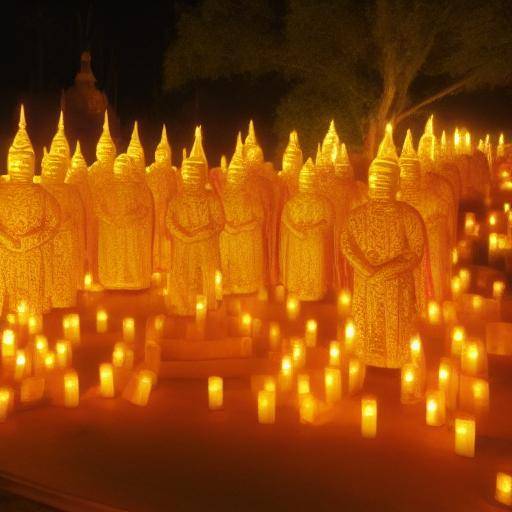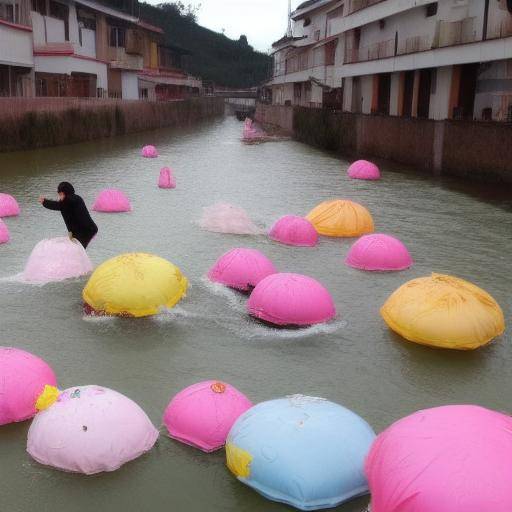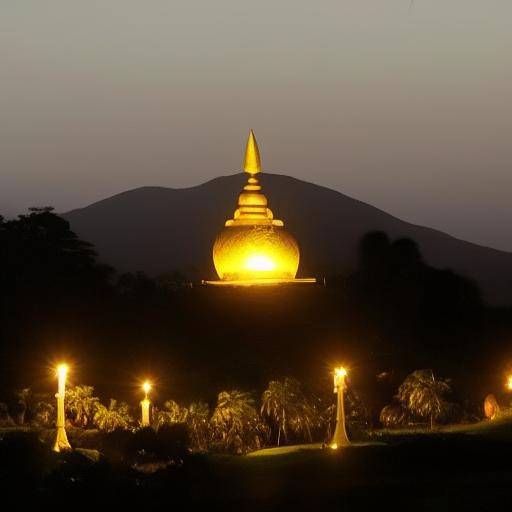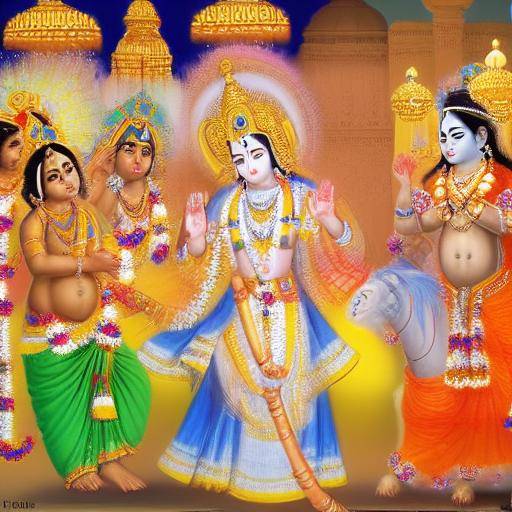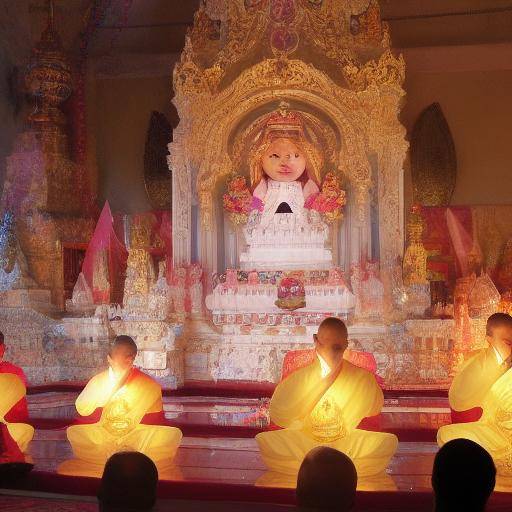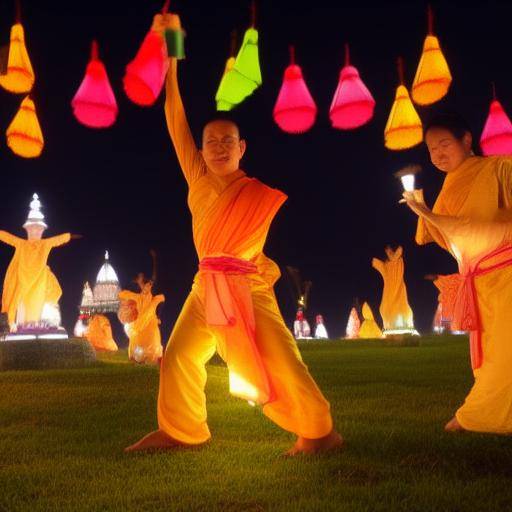
The naga, mythical creatures of Buddhist and Hindu mythology, have captivated the imagination of people for centuries. These divine serpents are not only protagonists in ancient tales, they are also closely linked to the protection of water, a vital resource for life. In this article, we will explore in depth the role of the naga in Buddhist and Hindu culture, as well as its meaning in the protection of one of the most important elements of nature: water.
Introduction
The naga, often represented as multi-head snakes, are figures that occupy a prominent place in the religious beliefs of many cultures in South Asia. Although their image may seem intimidating, the naga are regarded as benevolent guardians, especially in relation to water, a vital source of life and prosperity. In this article, we will explore the connection between naga, Buddhism and Hinduism, and how their symbolic presence has endured over the centuries.
History and Background
Origins of the Naga and their Importance in Buddhism and Hinduism
Naga have their roots in the ancient religious traditions of India and Southeast Asia. In the Buddhist and Hindu scriptures, the naga are described as half human beings, half snakes, possessing supernatural powers and inhabiting the aquatic kingdoms. In Buddhism, the naga are regarded as protectors of Buddha and are attributed the power to control the rains, which makes them venerated figures in the rituals of fertility and abundance. On the other hand, in Hinduism, the naga are associated with the fertility, prosperity and protection of the bodies of water.
Evolution of the Naga Beliefs to the Largo of History
Over the centuries, the image of the naga has evolved, adapting to local beliefs and practices. His presence is deeply rooted in the arts, architecture and religious festivities throughout Asia. The temples and sanctuaries dedicated to naga are common in the region, which reflects the continuing importance of these figures in the daily lives of local communities.
Analysis in Deep
Importance of the Naga in Water Protection
The role of the naga as water protectors is a central element in Buddhist and Hindu mythology. They are considered responsible for the regulation of the water bodies, ensuring their fertility and abundance. This symbolic connection between the naga and water reflects the deep reverence that many Asian cultures have towards this vital resource.
Challenges in the Preservation of Water Corps Associated with the Naga
Despite the veneration of the naga as guardians of water, many bodies of water face environmental and human pressures that threaten their integrity. Pollution, urbanization and climate change represent significant challenges for the preservation of these aquatic habitats, jeopardizing the symbolic relationship between naga and water.
Comprehensive review
Contemporary Applications of Naga Mythology in Buddhism and Hinduism
The influence of the naga in contemporary religious practices extends beyond mythological and ritual contexts. In popular culture and modern art, the representations of the naga continue to be a source of inspiration and reverence, keeping alive the connection between mythology and everyday life.
Expert Perspectives on the Role of the Naga in the News
Experts in mythology and religion offer a unique vision of the cultural and spiritual importance of the naga in today's society. Their interpretations and analysis provide a deeper understanding of how these ancient mythological figures continue to influence and enrich contemporary life.
Comparative analysis
Comparison between the Naga Beliefs and Representations in Buddhism and Hinduism
Although both Buddhism and Hinduism share a rich tradition of naga worship, there are distinctive nuances in their interpretations and representations. Understanding the differences and similarities between the Buddhist and Hindu visions of the Naga allows us to appreciate the diversity and complexity of these mythological figures.
Practical Tips and Accessible Recommendations
Practical Ways to Honor the Naga in Cotidian Life
For those interested in approaching this rich mythological tradition, there are numerous practices and rituals that honor the naga in a meaningful way. From participation in festivals to the adoption of sustainable practices for water protection, it is possible to engage actively and respectfully with the legacy of the naga.
Industry Perspectives and Expert Reviews
Deep Vision of the Thought Leaders on the Meaning of the Naga
The opinions and analysis of experts in mythology, history and religion provide a valuable perspective on the place of naga in the broader context of culture and spirituality. Their views enrich our understanding of the importance of the naga in the present world.
Case Studies and Real Life Applications
Illustrative Examples of Naga Influence in Different Areas
Through case studies, it is possible to explore how the beliefs and representations of the naga have impacted various aspects of society and culture, from art to struggles for the conservation of the environment.
Future Trends and Predictions
The Naga Legacy in a Changing World
As the world faces unprecedented environmental challenges, naga assessments as water guardians acquire new relevance. Exploring emerging trends and future predictions related to naga allows us to glimpse their potential role in protecting and preserving the vital resource of water.
Conclusion
In short, the naga, the divine serpents that guard the water, transcend the borders of mythology and intertwine intricately with life, spirituality and sustainability. Its lasting presence throughout the centuries is a testimony of the profound meaning they possess in the human psyche and in the relationship with nature. By understanding and appreciating the essence of the naga, we find a deeper connection with the vital element of water and the rich spiritual heritage of Buddhist and Hindu cultures.
Frequently asked questions
1. What is the role of the naga in the protection of water according to the Buddhist tradition?
The naga are regarded as guardians of the bodies of water in the Buddhist tradition, ensuring their fertility and abundance. They are given the power to control the rains and regulate the water cycle.
2. How are the naga represented in Buddhist and Hindu iconography?
In Buddhist iconography, the naga usually appears with seven heads and horse breeds, while in Hinduism, they are represented as serpents of multiple heads and ornamental jewels.
3. What religious festivals honor the naga?
The Naga Panchami festival, held in South Asia, is an important holiday where communities worship the naga to seek protection and blessings.
4. How can people contribute to water protection in honor of the naga?
The adoption of sustainable practices, participation in river-cleaning activities and the promotion of environmental awareness are concrete ways in which people can contribute to water protection in honour of the naga, keeping alive their tradition as guardians of the vital water resource.
5. Are there specific ceremonies to honor the naga?
Yes, various ceremonies and rituals take place in honor of the naga, seeking protection for communities and the fertility of the earth. These ceremonies are often linked to the rainy season and crop planting.
6. How have beliefs evolved in naga throughout history?
Over the centuries, beliefs in the naga have evolved, adapting to different cultures and contexts. Although some of his representations and meanings have changed, his role as guardians of water has remained rooted in collective consciousness.
Ultimately, the riddle of the naga, the divine serpents that guard the water, is both in their profound spiritual meaning and in their influence in everyday life. By honoring and understanding the legacy of the naga, we connect with an ancient wisdom that transcends time and space, and inspires us to preserve and protect the water, an indispensable treasure for life on our planet.


